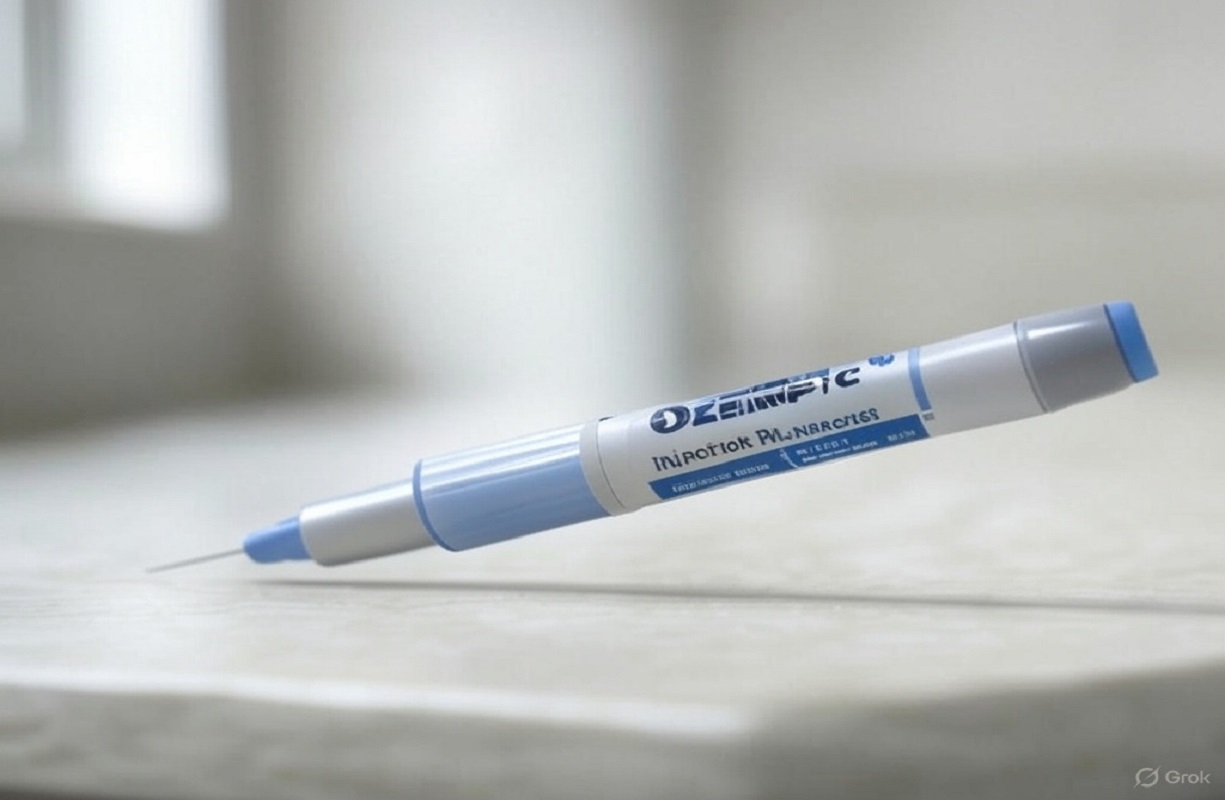On April 24, 2025, a U.S. judge rejected a bid by compounding pharmacies to continue producing copies of Novo Nordisk’s Ozempic and Wegovy, drugs critical for diabetes and weight loss. This ruling, centered on the active ingredient semaglutide, highlights tensions over drug shortages, compounding practices, and access to essential medications. Here’s a concise look at the decision, its implications, and the background.
Background: Compounding and Semaglutide
Compounding Explained:
Compounding pharmacies create customized medications by mixing or altering drug ingredients, often to address shortages of brand-name drugs. These pharmacies, regulated by the FDA and state authorities, have produced copies of Ozempic and Wegovy, sold through telehealth platforms like Hims & Hers, to meet surging demand.
Ozempic and Wegovy:
Ozempic and Wegovy, developed by Novo Nordisk, contain semaglutide, a GLP-1 receptor agonist. Ozempic treats type 2 diabetes, while Wegovy is approved for weight loss. Their popularity has driven Novo Nordisk’s valuation to $615 billion, but high demand has caused supply shortages, prompting compounding pharmacies to fill the gap.
FDA’s Role:
The FDA allows compounding during drug shortages but recently declared semaglutide’s shortage resolved, citing Novo Nordisk’s sufficient supply. This decision restricted compounding, leading to a legal challenge from the compounding industry.
The Court Ruling
U.S. District Judge Mark Pittman in Texas denied a preliminary injunction sought by the Outsourcing Facilities Association, a compounding industry group. The group’s February lawsuit challenged the FDA’s claim that semaglutide was no longer in short supply. The injunction would have allowed continued production of Ozempic and Wegovy copies during the legal process.
Key Details
- Injunction Denied: The ruling upholds the FDA’s timeline, requiring large compounding facilities to stop producing semaglutide copies by May 22, 2025. Smaller pharmacies, serving individual prescriptions, must cease immediately.
- Sealed Reasoning: Judge Pittman’s rationale is not public, filed under seal.
- Evidence Dispute: Lee Rosebush, chairman of the Outsourcing Facilities Association, said the group presented new evidence of ongoing shortages, but the judge declined to consider it. Rosebush expressed disappointment, insisting shortages persist.
This ruling follows a similar decision earlier in 2025, where Pittman barred compounding pharmacies from copying Eli Lilly’s Zepbound and Mounjaro, reflecting a pattern of prioritizing branded drugs.
Implications
- Patient Access:
Restricted compounding may limit access to affordable semaglutide alternatives, especially for patients using telehealth. Ozempic and Wegovy are costly, and shortages could resurface if Novo Nordisk’s supply falters. - Compounding Industry:
Large outsourcing facilities face a May 22 deadline, while smaller pharmacies must stop immediately, risking financial losses and market share. - Pharma Dominance:
The decision bolsters Novo Nordisk’s market control, ensuring only branded Ozempic and Wegovy are available, protecting their revenue. - Legal Battle Continues:
The lawsuit against the FDA is ongoing, with the compounding industry likely to press its case, potentially influencing future rulings or policies.
Why It Matters
This ruling reflects broader healthcare challenges: balancing innovation, affordability, and access. Compounding pharmacies argue they ensure access during shortages, while Novo Nordisk and the FDA emphasize regulatory oversight and intellectual property. GLP-1 drugs like Ozempic and Wegovy are vital for millions with diabetes and obesity, making supply stability critical.
Judge Pittman’s denial of the injunction strengthens Novo Nordisk and the FDA, limiting compounded Ozempic and Wegovy. While the compounding industry continues its legal fight, patients face potential cost and access challenges. This case will shape compounding practices and healthcare equity as demand for GLP-1 drugs grows.e unfolds, it will likely shape the future of compounding practices and the delicate balance between innovation and affordability in healthcare.
Disclaimer: This article is for informational purposes only and does not constitute medical or legal advice. Consult healthcare professionals for personalized medical guidance
Source: Reuters, April 24, 2025.



